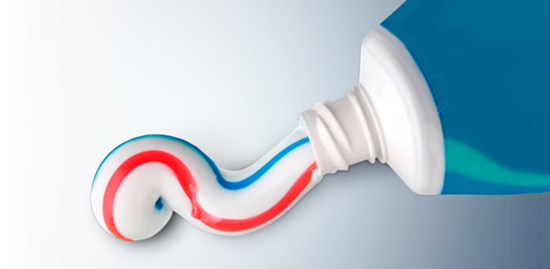A periorbital hematoma, commonly referred to as a black eye, can be a painful and unsightly condition resulting from trauma to the eye area. It is often accompanied by swelling, bruising, and a change in skin coloration. While there are several methods and remedies for addressing black eyes, one unconventional suggestion that has circulated for years is the use of toothpaste. In this article, we will delve into the idea of utilizing toothpaste to treat a black eye, its potential benefits, and the associated risks.
Does Toothpaste Help a Black Eye?

No, toothpaste does not help with a black eye. Using toothpaste to treat a black eye is not a recommended or effective course of action. A black eye usually arises from injury or trauma, and the best course of action is to follow standard first aid measures like rest, ice, and seeking medical evaluation if required.
The idea of using toothpaste to alleviate the symptoms of a black eye has been passed down through generations and is often regarded an old wives’ tale. The theory behind this home remedy is that toothpaste contains ingredients such as hydrogen peroxide, baking soda, and menthol, which may have anti-inflammatory and soothing properties. Proponents argue that these components potentially aid in reducing swelling and alleviating pain while promoting faster healing.
The Benefits of Toothpaste
- Potential Anti-Inflammatory Properties: Toothpaste contains baking soda, which is renowned for its anti-inflammatory properties. This may aid in reducing swelling around the eye area when applied topically.
- Cooling Sensation: One of the reasons people use toothpaste for a black eye is the cooling sensation it provides. The menthol present in toothpaste can create a numbing, soothing effect, which may temporarily alleviate pain and discomfort.
- Drying Effect: Some individuals assert that toothpaste can dry out the skin and promote the healing process by absorbing excess moisture. This action could potentially lead to a shorter duration for the bruising and swelling to subside.
The Risks and Drawbacks
While the idea of using toothpaste to treat a black eye may seem enticing, it’s crucial to consider the potential risks and drawbacks associated with this remedy:
- No Scientific Evidence: There is no scientific evidence to substantiate the effectiveness of toothpaste in treating black eyes. Home remedies should be approached with caution, and it’s advisable to rely on treatments that have been scientifically proven to be effective.
- Irritation and Allergic Reactions: Toothpaste is not formulated for application on the skin, especially the delicate skin around the eyes. Applying toothpaste to a black eye can result in burning, skin irritation, or even allergic reactions, making the situation worse.
- Delayed Healing: Contrary to the claim that toothpaste may expedite the healing process, its harsh ingredients may have the opposite effect, potentially slowing down the body’s natural healing mechanisms.
- Potential Infection: Toothpaste is not sterile, and applying it to a broken skin or open wound can introduce bacteria, increasing the risk of infection.
Safe and Effective Alternatives
Rather than resorting to toothpaste, consider these safe and effective alternatives for treating a black eye:
- Cold Compress: The application of a cold compress to the affected area can help relieve pain and reduce swelling. Use an ice pack wrapped in a towel or a clean cloth and apply it gently for fifteen to twenty minutes at a time.
- Arnica Cream: Arnica is a natural remedy renowned for its anti-inflammatory properties. Applying arnica cream or gel to the bruised area may assist in expediting the healing process.
- Over-the-Counter Pain Relievers: Non-prescription pain relievers such as acetaminophen or ibuprofen can help manage pain and inflammation.
- Rest and Elevate: Allow your body ample time to heal by ensuring you get plenty of rest and elevating your head while sleeping to reduce swelling.
Q&A

Does Toothpaste help bruises?
No, applying toothpaste to a bruise does not provide any benefits. Toothpaste is not a recommended treatment for bruising. Bruises occur due to broken blood vessels beneath the skin, and toothpaste does not have any proven therapeutic properties for this purpose. It’s best to follow conventional methods like ice, rest, and elevation for bruise management.
Can toothpaste cause a black eye if used improperly?
Toothpaste itself is not likely to cause a black eye. However, if applied aggressively around the eye area, it could potentially cause skin irritation or damage, but not a black eye in the typical sense caused by trauma or injury.
How long to leave toothpaste on black eye?
Using toothpaste as a treatment for a black eye is not a recommended treatment. It can irritate the skin and eyes. Seek medical advice for the appropriate care and management of a black eye.
Are there specific types of toothpaste recommended for black eye treatment?
Toothpaste is not recommended for black eye treatment. It can irritate the skin and eyes.
Does toothpaste reduce swelling in a black eye?
No, using toothpaste on a black eye is not recommended method for reducing swelling.
What ingredients in toothpaste may help with a black eye?
Toothpaste is does not contain ingredients specifically designed to help with this condition.
Can toothpaste worsen a black eye or cause further damage?
Yes, applying toothpaste to a black eye can potentially exacerbate the condition, leading to further skin irritation and damage, especially in the delicate eye area.
Here is a listing some common ingredients found in toothpaste:
Common Toothpaste Ingredients |
Purpose |
| Fluoride | Helps prevent tooth decay by strengthening enamel. |
| Silica | Abrasive agent for cleaning teeth and removing stains. |
| Glycerin | Provides a smooth texture and helps retain moisture. |
| Water | Serves as a base and helps achieve the desired consistency. |
| Sodium Lauryl Sulfate (SLS) | Foaming agent for creating lather and dispersing ingredients. |
| Flavorings | Added for taste and freshness (e.g., mint, spearmint). |
| Sweeteners (e.g., saccharin) | Enhance taste without promoting tooth decay. |
| Humectants (e.g., sorbitol) | Retain moisture and prevent drying out of the toothpaste. |
| Xylitol | May help prevent tooth decay and promote oral health. |
| Preservatives | Extend the shelf life of the product. |
| Thickening Agents (e.g., carrageenan) | Improve consistency and texture. |
| Detergents (e.g., cocamidopropyl betaine) | Help with foaming and cleaning. |
| Binding Agents (e.g., cellulose gum) | Help stabilize and bind the ingredients. |
| Colors and dyes | Add color to the toothpaste. |
| Antimicrobial agents (e.g., triclosan) | May help control bacteria and gum disease. |
| Desensitizing agents (e.g., potassium nitrate) | Help alleviate tooth sensitivity. |
Please note that the exact formulation of toothpaste can indeed vary between brands and types, so, it’s important to note that not all toothpaste products will include each of these listed ingredients. Furthermore, some people may have sensitivities or allergies to certain toothpaste ingredients, so it’s crucial to read the product label and select a toothpaste that suits your specific needs and preferences.
Conclusion
In conclusion, using toothpaste on a black eye is not recommended. Toothpaste contains potentially irritating ingredients that can harm the delicate skin around the eye, leading to discomfort and adverse reactions. Safer and more effective methods, such as taking over-the-counter pain relievers and applying a cold compress, should be considered for treating black eyes. If a black eye is severe or accompanied by changes in vision, seeking immediate medical attention is crucial to rule out any underlying issues.


